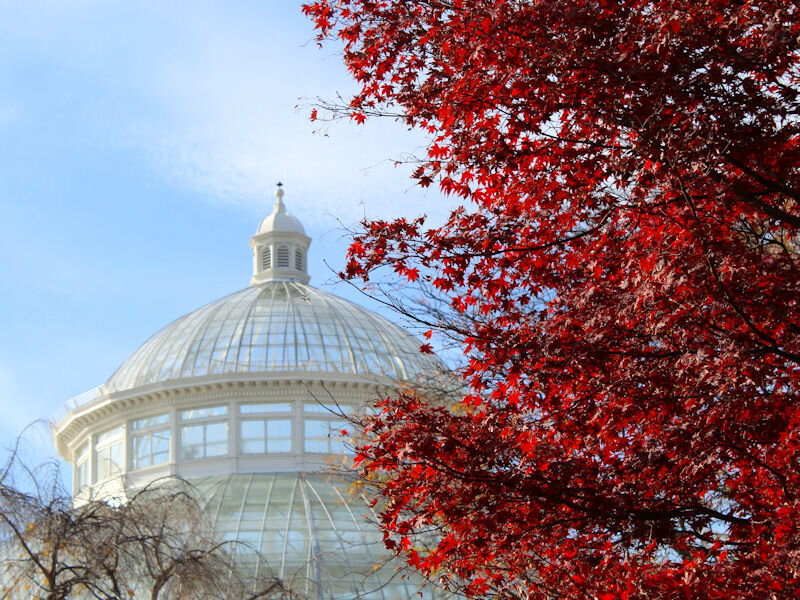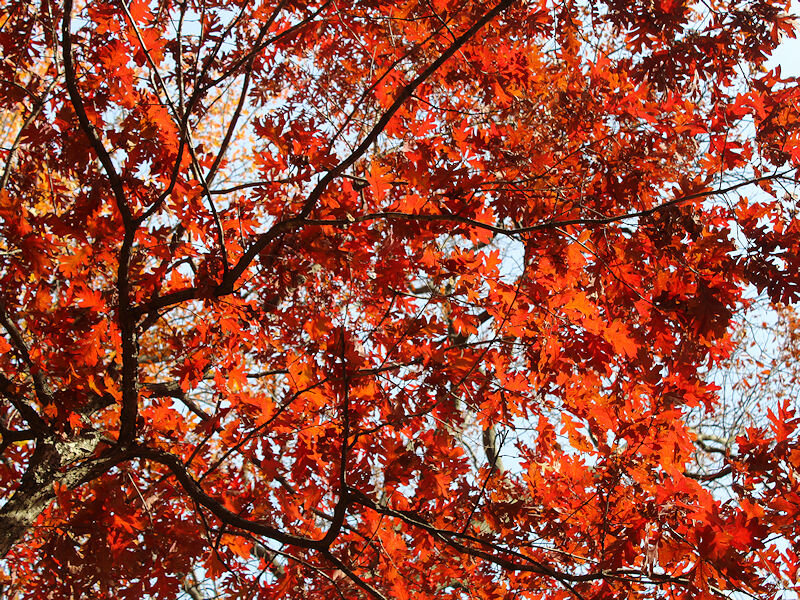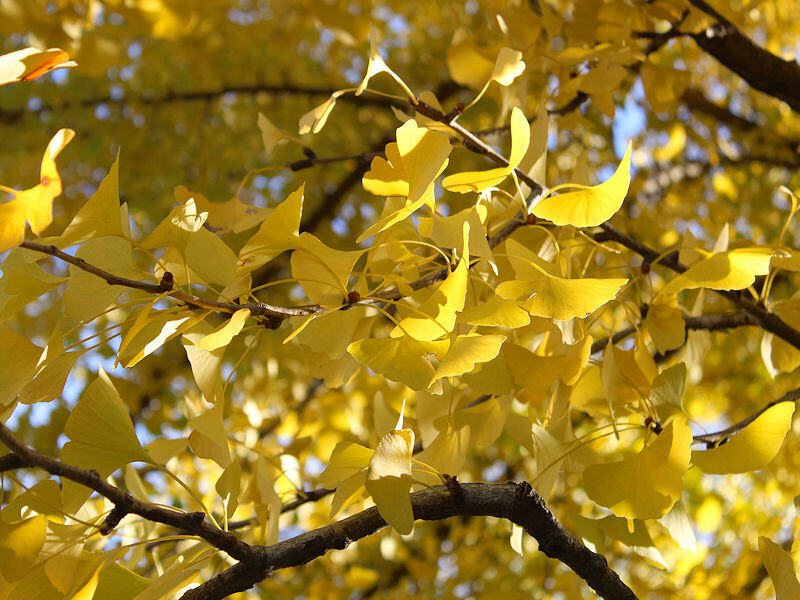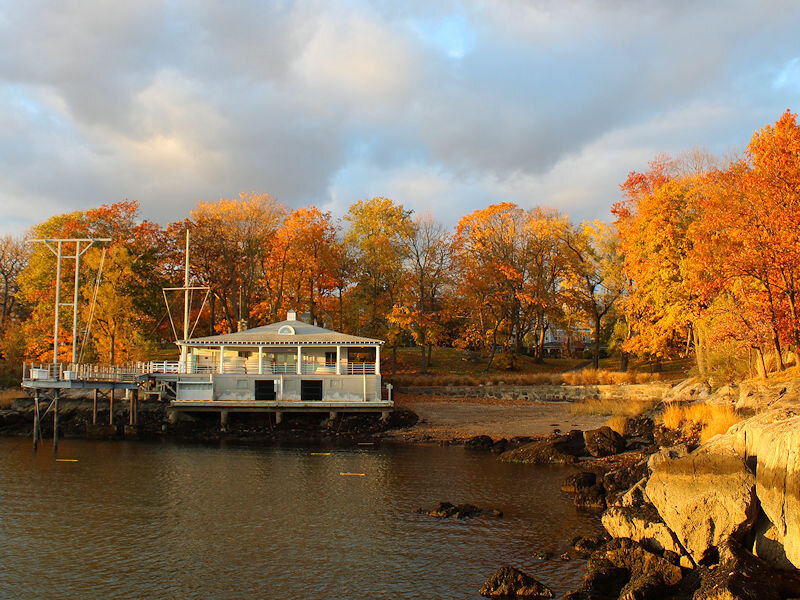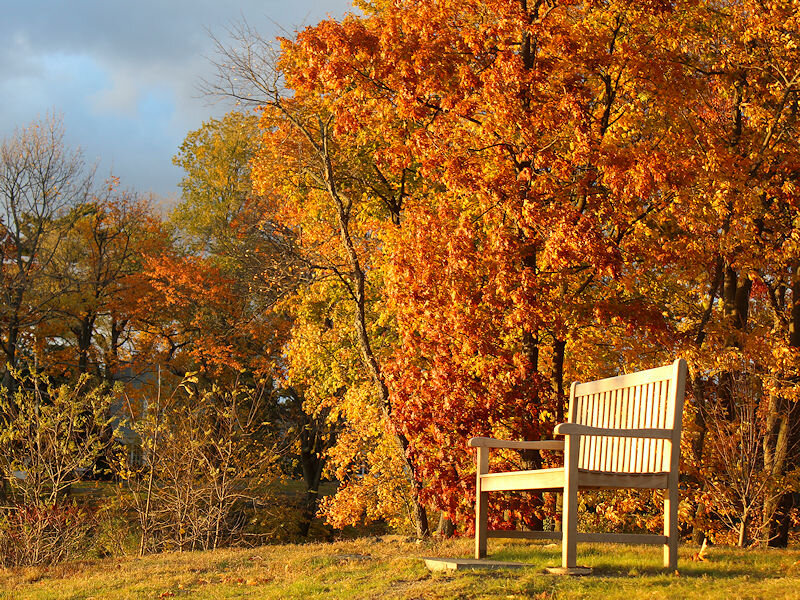-
Posts
22,887 -
Joined
Content Type
Profiles
Blogs
Forums
American Weather
Media Demo
Store
Gallery
Everything posted by donsutherland1
-
After today's brief shot of warmer air, much colder air is again poised to move into the region. Tomorrow will see temperatures hold steady or fall from the 40s during the afternoon and evening hours. An unseasonably cold weekend will follow. There is a small chance that a weak system could bring a period of light snow or flurries to parts of the region late Sunday into Monday. First measurable snowfall statistics for select cities: Allentown: Normal: December 6; 2020-21: December 9 Bridgeport: Normal: December 3; 2020-21: December 16 Islip: Normal: December 10; 2020-21: December 16 New York City: Normal: December 13; 2020-21: December 16 Newark: Normal: December 9; 2020-21: December 9 Philadelphia: Normal: December 19; 2020-21: December 16 The temperature anomaly for November 20-30 is on course to average below normal due to the development of AO blocking. The recent guidance has been correcting colder in response to this blocking. The Arctic Oscillation fell below -1.000 on November 23. Such strong blocking typically favors a period of colder than normal weather (November 20-30, 1991-2020 period): Boston: Normal: 42.2°; AO cases: 38.4° New York City: Normal: 45.5°; AO cases: 41.7° Philadelphia: Normal: 45.4°; AO cases: 41.7° The duration of the blocking remains uncertain. Should blocking dissipate, warmer conditions could develop near the start of December. Both the CFSv2 and EPS weeklies favor a return of warmer air at some point during the first week of December. Fall 2021 is well on course to being wetter to much wetter than normal in the northern Middle Atlantic region. Since 1869, there have been 9 August cases where New York City picked up 20.00" or more rainfall during the summer. Two thirds of those cases (and 4/5 of those with summer mean temperatures of 73.0° or above) had 17.00" or more fall precipitation in New York City. 2011 is probably the closest match in terms of precipitation and a nearly identical summer mean temperature. Mean fall precipitation for those 9 cases was 14.86". The median was 17.35". The 1991-2020 normal value is 12.27". Fall rainfall through November 25 4 pm is 16.28". Following very wet July-September periods, winter (December-February) precipitation has typically been near or below normal. The most recent exception was winter 2018-19. The ENSO Region 1+2 anomaly was -1.0°C and the Region 3.4 anomaly was -1.0°C for the week centered around November 17. For the past six weeks, the ENSO Region 1+2 anomaly has averaged -0.67°C and the ENSO Region 3.4 anomaly has averaged -0.92°C. La Niña conditions will likely persist into at least late winter. The SOI was +24.68 today. The preliminary Arctic Oscillation (AO) figure was -1.222 today. On November 23 the MJO was in Phase 4 at an amplitude of 0.931 (RMM). The November 22-adjusted amplitude was 0.733 (RMM). Based on sensitivity analysis applied to the latest guidance, there is an implied 99% probability that New York City will have a cooler than normal November (1991-2020 normal). November will likely finish with a mean temperature near 46.2° (1.8° below normal).
-
Morning thoughts… Sunshine will give way to increasing clouds this afternoon. It will be noticeably milder. High temperatures will likely reach the lower and middle 50s in most of the region. Likely high temperatures around the region include: New York City (Central Park): 53° Newark: 56° Philadelphia: 55° Normals: New York City: 30-Year: 50.7°; 15-Year: 50.9° Newark: 30-Year: 51.4°; 15-Year: 51.8° Philadelphia: 30-Year: 52.4°; 15-Year: 52.7° After some overnight showers, it will turn colder again. There remains a possibility that parts of the region could see a light snowfall Sunday night into Monday.
-
Tomorrow will witness the return of a milder air mass, but its stay will be short-lived. Another strong cold front will move across the region tomorrow night. In its wake, an unseasonably cold weekend will follow. There is a small chance that a weak system could bring a period of light snow or flurries to parts of the region late Sunday into Monday. First measurable snowfall statistics for select cities: Allentown: Normal: December 6; 2020-21: December 9 Bridgeport: Normal: December 3; 2020-21: December 16 Islip: Normal: December 10; 2020-21: December 16 New York City: Normal: December 13; 2020-21: December 16 Newark: Normal: December 9; 2020-21: December 9 Philadelphia: Normal: December 19; 2020-21: December 16 The temperature anomaly for November 20-30 is on course to average below normal due to the development of AO blocking. The recent guidance has been correcting colder in response to this blocking. The Arctic Oscillation fell below -1.000 on November 23. Such strong blocking typically favors a period of colder than normal weather (November 20-30, 1991-2020 period): Boston: Normal: 42.2°; AO cases: 38.4° New York City: Normal: 45.5°; AO cases: 41.7° Philadelphia: Normal: 45.4°; AO cases: 41.7° The duration of the blocking remains uncertain. Should blocking dissipate, warmer conditions could develop near the start of December. Both the CFSv2 and EPS weeklies favor a return of warmer air at some point during the first week of December. Fall 2021 is well on course to being wetter to much wetter than normal in the northern Middle Atlantic region. Since 1869, there have been 9 August cases where New York City picked up 20.00" or more rainfall during the summer. Two thirds of those cases (and 4/5 of those with summer mean temperatures of 73.0° or above) had 17.00" or more fall precipitation in New York City. 2011 is probably the closest match in terms of precipitation and a nearly identical summer mean temperature. Mean fall precipitation for those 9 cases was 14.86". The median was 17.35". The 1991-2020 normal value is 12.27". Fall rainfall through November 23 4 pm is 16.28". Following very wet July-September periods, winter (December-February) precipitation has typically been near or below normal. The most recent exception was winter 2018-19. The ENSO Region 1+2 anomaly was -1.0°C and the Region 3.4 anomaly was -1.0°C for the week centered around November 17. For the past six weeks, the ENSO Region 1+2 anomaly has averaged -0.67°C and the ENSO Region 3.4 anomaly has averaged -0.92°C. La Niña conditions will likely persist into at least late winter. The SOI was +11.90 today. The preliminary Arctic Oscillation (AO) figure was -1.749 today. On November 22 the MJO was in Phase 4 at an amplitude of 0.733 (RMM). The November 21-adjusted amplitude was 1.027 (RMM). Based on sensitivity analysis applied to the latest guidance, there is an implied 98% probability that New York City will have a cooler than normal November (1991-2020 normal). November will likely finish with a mean temperature near 46.2° (1.8° below normal).
-
Morning thoughts… Today will partly to mostly sunny but still chilly. High temperatures will likely reach the middle and upper 40s in most of the region. Likely high temperatures around the region include: New York City (Central Park): 45° Newark: 49° Philadelphia: 49° Normals: New York City: 30-Year: 51.1°; 15-Year: 51.3° Newark: 30-Year: 51.8°; 15-Year: 52.1° Philadelphia: 30-Year: 52.8°; 15-Year: 53.1° Tomorrow be milder as clouds increase ahead of the next cold front. There remains a possibility that parts of the region could see a light snowfall Sunday night into Monday.
-
I agree. It will probably fall to 30.
-
It reached 32 this morning.
-
Let’s see how things work out on tonight’s guidance. It would be nice to have at least a light snowfall to before the end of the month.
-
About 20% of EPS members have 1” or more. The potential exists for a light snowfall.
-
The coldest air of the season so far covers the region. Tomorrow will be another fair but cold day. Thanksgiving Day will witness the return of a milder air mass, but its duration will be short-lived. Another strong cold front will move across the region Thursday night. In its wake, an unseasonably cold weekend will follow. There is a small chance that a weak system could bring a period of light snow or flurries to parts of the region on Sunday. First measurable snowfall statistics for select cities: Allentown: Normal: December 6; 2020-21: December 9 Bridgeport: Normal: December 3; 2020-21: December 16 Islip: Normal: December 10; 2020-21: December 16 New York City: Normal: December 13; 2020-21: December 16 Newark: Normal: December 9; 2020-21: December 9 Philadelphia: Normal: December 19; 2020-21: December 16 The temperature anomaly for November 20-30 is on course to average below normal due to the development of AO blocking. The recent guidance has been correcting colder in response to this blocking. The Arctic Oscillation fell below -1.000 on November 23. Such strong blocking typically favors a period of colder than normal weather (November 20-30, 1991-2020 period): Boston: Normal: 42.2°; AO cases: 38.4° New York City: Normal: 45.5°; AO cases: 41.7° Philadelphia: Normal: 45.4°; AO cases: 41.7° The duration of the blocking remains uncertain. Should blocking dissipate, warmer conditions could develop near the start of December. Both the CFSv2 and EPS weeklies favor a return of warmer air at some point during the first week of December. Fall 2021 is well on course to being wetter to much wetter than normal in the northern Middle Atlantic region. Since 1869, there have been 9 August cases where New York City picked up 20.00" or more rainfall during the summer. Two thirds of those cases (and 4/5 of those with summer mean temperatures of 73.0° or above) had 17.00" or more fall precipitation in New York City. 2011 is probably the closest match in terms of precipitation and a nearly identical summer mean temperature. Mean fall precipitation for those 9 cases was 14.86". The median was 17.35". The 1991-2020 normal value is 12.27". Fall rainfall through November 23 4 pm is 16.28". Following very wet July-September periods, winter (December-February) precipitation has typically been near or below normal. The most recent exception was winter 2018-19. The ENSO Region 1+2 anomaly was -1.0°C and the Region 3.4 anomaly was -1.0°C for the week centered around November 17. For the past six weeks, the ENSO Region 1+2 anomaly has averaged -0.67°C and the ENSO Region 3.4 anomaly has averaged -0.92°C. La Niña conditions will likely persist into at least late winter. The SOI was +8.40 today. The preliminary Arctic Oscillation (AO) figure was -1.410 today. On November 21 the MJO was in Phase 4 at an amplitude of 1.023 (RMM). The November 20-adjusted amplitude was 1.305 (RMM). Based on sensitivity analysis applied to the latest guidance, there is an implied 95% probability that New York City will have a cooler than normal November (1991-2020 normal). November will likely finish with a mean temperature near 46.4° (1.6° below normal).
-
A small accumulation also shows up on the National Blend of Models.
-
Morning thoughts… Today will partly to mostly sunny but brisk. High temperatures will likely reach the lower and middle 40s in most of the region. Likely high temperatures around the region include: New York City (Central Park): 44° Newark: 47° Philadelphia: 46° Normals: New York City: 30-Year: 51.4°; 15-Year: 51.6° Newark: 30-Year: 52.1°; 15-Year: 52.4° Philadelphia: 30-Year: 53.1°; 15-Year: 53.4° Tomorrow will be another fair but cold day.
-
Early showers marked the passage of a strong cold front. At Central Park, 0.04" of rain was measured today. That raised the year-to-date precipitation total to 58.21", which ranks 2021 as New York City's 12th wettest year on record. Out West, Denver has now surpassed the record for its latest first measurable snowfall. The longstanding record was set on November 21, 1934. Phoenix tied 2017 for its 3rd warmest November 1-21 period on record. Each of the last three years has ranked among the 10 warmest November 1-21 periods on record. Today saw Phoenix reach 82° today, its 22nd consecutive 80° or warmer day this month. The previous November record was 17 consecutive days, which was set during November 1-17, 1999. Prior to that the records were 16 days (November 1-16, 1989) and 15 days (November 1-15, 1934 and 1967). The coldest air of the season so far is continuing to push into the region. New York City's Central Park could see its first freeze tomorrow or Wednesday. That would be slightly later than the mean 1991-2020 date of November 20. Last year's first freeze occurred on October 31, which was the earliest first freeze since 1988. No measurable snow appears likely in much of the region through this week. Much of the region typically sees its first measurable snowfall in December. First measurable snowfall statistics for select cities: Allentown: Normal: December 6; 2020-21: December 9 Bridgeport: Normal: December 3; 2020-21: December 16 Islip: Normal: December 10; 2020-21: December 16 New York City: Normal: December 13; 2020-21: December 16 Newark: Normal: December 9; 2020-21: December 9 Philadelphia: Normal: December 19; 2020-21: December 16 The temperature anomaly for November 20-30 will likely wind up below normal due to the development of AO blocking. The latest teleconnections forecasts continue to suggest that the AO will drop sharply to somewhere between -3.000 and -1.000 on or after November 20. Such strong blocking typically favors a period of colder than normal weather (November 20-30, 1991-2020 period): Boston: Normal: 42.2°; AO cases: 38.4° New York City: Normal: 45.5°; AO cases: 41.7° Philadelphia: Normal: 45.4°; AO cases: 41.7° The duration of the blocking is uncertain. Should blocking dissipate, warmer conditions could develop near the start of December. Fall 2021 is well on course to being wetter to much wetter than normal in the northern Middle Atlantic region. Since 1869, there have been 9 August cases where New York City picked up 20.00" or more rainfall during the summer. Two thirds of those cases (and 4/5 of those with summer mean temperatures of 73.0° or above) had 17.00" or more fall precipitation in New York City. 2011 is probably the closest match in terms of precipitation and a nearly identical summer mean temperature. Mean fall precipitation for those 9 cases was 14.86". The median was 17.35". The 1991-2020 normal value is 12.27". Fall rainfall through November 22 4 pm is 16.28". Following very wet July-September periods, winter (December-February) precipitation has typically been near or below normal. The most recent exception was winter 2018-19. The ENSO Region 1+2 anomaly was -1.0°C and the Region 3.4 anomaly was -1.0°C for the week centered around November 17. For the past six weeks, the ENSO Region 1+2 anomaly has averaged -0.67°C and the ENSO Region 3.4 anomaly has averaged -0.92°C. La Niña conditions will likely persist into at least late winter. The SOI was +9.92 today. The preliminary Arctic Oscillation (AO) figure was -0.835 today. On November 20 the MJO was in Phase 4 at an amplitude of 1.303 (RMM). The November 19-adjusted amplitude was 1.242 (RMM). Based on sensitivity analysis applied to the latest guidance, there is an implied 91% probability that New York City will have a cooler than normal November (1991-2020 normal). November will likely finish with a mean temperature near 46.6° (1.4° below normal).
-
Morning thoughts… Today will see clouds break later in the day after some earlier showers. After a mild start, temperatures will begin to fall, especially during the afternoon hours. High temperatures will likely reach the lower and middle 50s in most of the region. Likely high temperatures around the region include: New York City (Central Park): 51° Newark: 53° Philadelphia: 53° Normals: New York City: 30-Year: 51.8°; 15-Year: 51.9° Newark: 30-Year: 52.5°; 15-Year: 52.8° Philadelphia: 30-Year: 53.5°; 15-Year: 53.7° The coldest air mass of the season will bring about widespread freezes tonight and tomorrow night.
-
A cold front will cross the region tonight with some showers. Tomorrow will start mild but the temperature will hold steady or fall during the afternoon as the coldest air so far this season overspreads the region. New York City's Central Park could see its first freeze on either November 23 or November 24. That would be slightly later than the mean 1991-2020 date of November 20. Last year's first freeze occurred on October 31, which was the earliest first freeze since 1988. No measurable snow appears likely in much of the region through the coming week. However, any such snowfall would be unusually early. Much of the region typically sees its first measurable snowfall in December. First measurable snowfall statistics for select cities: Allentown: Normal: December 6; 2020-21: December 9 Bridgeport: Normal: December 3; 2020-21: December 16 Islip: Normal: December 10; 2020-21: December 16 New York City: Normal: December 13; 2020-21: December 16 Newark: Normal: December 9; 2020-21: December 9 Philadelphia: Normal: December 19; 2020-21: December 16 The temperature anomaly for November 20-30 will likely wind up below normal due to the development of AO blocking. The latest teleconnections forecasts continue to suggest that the AO will drop sharply to somewhere between -3.000 and -1.000 on or after November 20. Such strong blocking typically favors a period of colder than normal weather (November 20-30, 1991-2020 period): Boston: Normal: 42.2°; AO cases: 38.4° New York City: Normal: 45.5°; AO cases: 41.7° Philadelphia: Normal: 45.4°; AO cases: 41.7° The duration of the blocking is uncertain. Should blocking dissipate, warmer conditions could develop near the start of December. Fall 2021 is well on course to being wetter to much wetter than normal in the northern Middle Atlantic region. Since 1869, there have been 9 August cases where New York City picked up 20.00" or more rainfall during the summer. Two thirds of those cases (and 4/5 of those with summer mean temperatures of 73.0° or above) had 17.00" or more fall precipitation in New York City. 2011 is probably the closest match in terms of precipitation and a nearly identical summer mean temperature. Mean fall precipitation for those 9 cases was 14.86". The median was 17.35". The 1991-2020 normal value is 12.27". Fall rainfall through November 20 4 pm is 16.23". Following very wet July-September periods, winter (December-February) precipitation has typically been near or below normal. The most recent exception was winter 2018-19. The ENSO Region 1+2 anomaly was -0.7°C and the Region 3.4 anomaly was -0.8°C for the week centered around November 10. For the past six weeks, the ENSO Region 1+2 anomaly has averaged -0.53°C and the ENSO Region 3.4 anomaly has averaged -0.85°C. La Niña conditions will likely persist into at least late winter. The SOI was +7.00 today. The preliminary Arctic Oscillation (AO) figure was -0.793 today. On November 19 the MJO was in Phase 4 at an amplitude of 1.244 (RMM). The November 18-adjusted amplitude was 1.141 (RMM). Based on sensitivity analysis applied to the latest guidance, there is an implied 87% probability that New York City will have a cooler than normal November (1991-2020 normal). November will likely finish with a mean temperature near 46.8° (1.2° below normal).
-
Morning thoughts… Today will be mostly cloudy and mild. High temperatures will likely reach the middle and upper 50s in most of the region. Likely high temperatures around the region include: New York City (Central Park): 54° Newark: 58° Philadelphia: 57° Normals: New York City: 30-Year: 52.1°; 15-Year: 52.2° Newark: 30-Year: 52.9°; 15-Year: 53.1° Philadelphia: 30-Year: 53.8°; 15-Year: 54.0° The coldest air mass of the season will overspreading the region later tomorrow.
-
Tomorrow and Monday will be milder days. However, another surge of cold air is likely early next week. The cold air will be preceded by a period of rain or showers. In the wake of next week's cold front, New York City's Central Park could see its first freeze on either November 23 or November 24. That would be slightly later than the mean 1991-2020 date of November 20. Last year's first freeze occurred on October 31, which was the earliest first freeze since 1988. The temperature anomaly for November 20-30 will likely wind up somewhat below normal due to the development of AO blocking. The latest teleconnections forecasts continue to suggest that the AO will drop sharply to somewhere between -3.000 and -1.000 on or after November 20. Such strong blocking typically favors a period of colder than normal weather (November 20-30, 1991-2020 period): Boston: Normal: 42.2°; AO cases: 38.4° New York City: Normal: 45.5°; AO cases: 41.7° Philadelphia: Normal: 45.4°; AO cases: 41.7° The duration of the blocking is uncertain. Should blocking dissipate, warmer conditions could develop near the start of December. Fall 2021 is well on course to being wetter to much wetter than normal in the northern Middle Atlantic region. Since 1869, there have been 9 August cases where New York City picked up 20.00" or more rainfall during the summer. Two thirds of those cases (and 4/5 of those with summer mean temperatures of 73.0° or above) had 17.00" or more fall precipitation in New York City. 2011 is probably the closest match in terms of precipitation and a nearly identical summer mean temperature. Mean fall precipitation for those 9 cases was 14.86". The median was 17.35". The 1991-2020 normal value is 12.27". Fall rainfall through November 20 4 pm is 16.23". Following very wet July-September periods, winter (December-February) precipitation has typically been near or below normal. The most recent exception was winter 2018-19. The ENSO Region 1+2 anomaly was -0.7°C and the Region 3.4 anomaly was -0.8°C for the week centered around November 10. For the past six weeks, the ENSO Region 1+2 anomaly has averaged -0.53°C and the ENSO Region 3.4 anomaly has averaged -0.85°C. La Niña conditions will likely persist into at least late winter. The SOI was +10.69 today. The preliminary Arctic Oscillation (AO) figure was -0.306 today. On November 18 the MJO was in Phase 4 at an amplitude of 1.139 (RMM). The November 17-adjusted amplitude was 1.118 (RMM). Based on sensitivity analysis applied to the latest guidance, there is an implied 80% probability that New York City will have a cooler than normal November (1991-2020 normal). November will likely finish with a mean temperature near 47.0° (1.0° below normal).
-
-
Morning thoughts… Today will be partly to mostly sunny and unseasonably cool. High temperatures will likely reach the upper 40s in most of the region. Likely high temperatures around the region include: New York City (Central Park): 46° Newark: 50° Philadelphia: 49° Normals: New York City: 30-Year: 52.5°; 15-Year: 52.6° Newark: 30-Year: 53.2°; 15-Year: 53.5° Philadelphia: 30-Year: 54.2°; 15-Year: 54.4° Milder air will return tomorrow. However, a fresh push of cold air is likely early next week.
-
Noticeably colder air is now in place. The weekend will start on a chilly note, but end with milder conditions. Another surge of cold air is likely early next week. The cold air will be preceded by a period of rain or showers. A strong storm will develop well offshore following the frontal passage, but will not have a significant impact on the Philadelphia to New York City areas. In the wake of next week's cold front, New York City's Central Park could see its first freeze on either November 23 or November 24. That would be slightly later than the mean 1991-2020 date of November 20. Last year's first freeze occurred on October 31, which was the earliest first freeze since 1988. The temperature anomaly for November 20-30 will likely wind up somewhat below normal due to the development of AO blocking. The latest teleconnections forecasts continue to suggest that the AO will drop sharply to somewhere between -3.000 and -1.000 on or after November 20. Such strong blocking typically favors a period of colder than normal weather (November 20-30, 1991-2020 period): Boston: Normal: 42.2°; AO cases: 38.4° New York City: Normal: 45.5°; AO cases: 41.7° Philadelphia: Normal: 45.4°; AO cases: 41.7° The duration of the blocking is uncertain. Should blocking dissipate, warmer conditions could develop near the start of December. Fall 2021 is well on course to being wetter to much wetter than normal in the northern Middle Atlantic region. Since 1869, there have been 9 August cases where New York City picked up 20.00" or more rainfall during the summer. Two thirds of those cases (and 4/5 of those with summer mean temperatures of 73.0° or above) had 17.00" or more fall precipitation in New York City. 2011 is probably the closest match in terms of precipitation and a nearly identical summer mean temperature. Mean fall precipitation for those 9 cases was 14.86". The median was 17.35". The 1991-2020 normal value is 12.27". Fall rainfall through November 19 4 pm is 16.23". Following very wet July-September periods, winter (December-February) precipitation has typically been near or below normal. The most recent exception was winter 2018-19. The ENSO Region 1+2 anomaly was -0.7°C and the Region 3.4 anomaly was -0.8°C for the week centered around November 10. For the past six weeks, the ENSO Region 1+2 anomaly has averaged -0.53°C and the ENSO Region 3.4 anomaly has averaged -0.85°C. La Niña conditions will likely persist into at least late winter. The SOI was +13.55 today. The preliminary Arctic Oscillation (AO) figure was +0.729 today. On November 17 the MJO was in Phase 4 at an amplitude of 1.115 (RMM). The November 16-adjusted amplitude was 1.351 (RMM). Based on sensitivity analysis applied to the latest guidance, there is an implied 72% probability that New York City will have a cooler than normal November (1991-2020 normal). November will likely finish with a mean temperature near 47.2° (0.8° below normal).
-
-
Morning thoughts… Today will be partly to mostly sunny and much cooler. High temperatures will likely reach the upper 40s and lower 50s in most of the region. Likely high temperatures around the region include: New York City (Central Park): 47° Newark: 52° Philadelphia: 50° Normals: New York City: 30-Year: 52.8°; 15-Year: 52.9° Newark: 30-Year: 53.6°; 15-Year: 53.9° Philadelphia: 30-Year: 54.6°; 15-Year: 54.7° The weekend will start chilly but end mild.
-
Ahead of an advancing cold front, temperatures soared into the 60s and 70s across the region. High temperatures included: Albany: 65° Baltimore: 74° Boston: 70° Bridgeport: 64° Islip: 64° New York City: 69° Newark: 72° Philadelphia: 73° Poughkeepsie: 69° (tied record set in 1953 and 1963) Providence: 69° Washington, DC: 74° Wilmington, DE: 71° Newark reached 70° for the 177th time this year. The old record was 173 days, which was set in 2010. Four of the five years that saw 170 or more such days have occurred since 2000 and three have occurred since 2010. Noticeably colder air will return tomorrow. A generally dry and chilly weekend lies ahead. Another surge of cold air is possible early next week. Overall, it is likely that the temperature anomaly for the second half of November will be somewhat below normal due to the development of AO blocking. The latest teleconnections forecasts continue to suggest that the AO will drop sharply to somewhere between -3.000 and -1.000 on or after November 20. The duration of the blocking is uncertain. Such strong blocking typically favors a period of colder than normal weather (November 20-30, 1991-2020 period): Boston: Normal: 42.2°; AO cases: 38.4° New York City: Normal: 45.5°; AO cases: 41.7° Philadelphia: Normal: 45.4°; AO cases: 41.7° Fall 2021 is well on course to being wetter to much wetter than normal in the northern Middle Atlantic region. Since 1869, there have been 9 August cases where New York City picked up 20.00" or more rainfall during the summer. Two thirds of those cases (and 4/5 of those with summer mean temperatures of 73.0° or above) had 17.00" or more fall precipitation in New York City. 2011 is probably the closest match in terms of precipitation and a nearly identical summer mean temperature. Mean fall precipitation for those 9 cases was 14.86". The median was 17.35". The 1991-2020 normal value is 12.27". Fall rainfall through November 18 4 pm is 16.13". Following very wet July-September periods, winter (December-February) precipitation has typically been near or below normal. The most recent exception was winter 2018-19. The ENSO Region 1+2 anomaly was -0.7°C and the Region 3.4 anomaly was -0.8°C for the week centered around November 10. For the past six weeks, the ENSO Region 1+2 anomaly has averaged -0.53°C and the ENSO Region 3.4 anomaly has averaged -0.85°C. La Niña conditions will likely persist into at least late winter. The SOI was +17.69 today. The preliminary Arctic Oscillation (AO) figure was +0.617 today. On November 16 the MJO was in Phase 4 at an amplitude of 1.343 (RMM). The November 15-adjusted amplitude was 1.352 (RMM). Based on sensitivity analysis applied to the latest guidance, there is an implied 72% probability that New York City will have a cooler than normal November (1991-2020 normal). November will likely finish with a mean temperature near 47.2° (0.8° below normal).
-
Speaking of 80F temperatures, Phoenix has just recorded its November-record 18th consecutive 80F or above temperature. The previous record of 17 consecutive days was set during November 1-17, 1999.
-
As of 12:51 pm EST, Newark had recorded a daily high temperature of 70°. Today is Newark's 177th 70° or warmer day this year. The old record of 173 days was set in 2010.
-
There is an ongoing marine heatwave covering parts of the Pacific Ocean. That has increased the intensity of atmospheric rivers.





